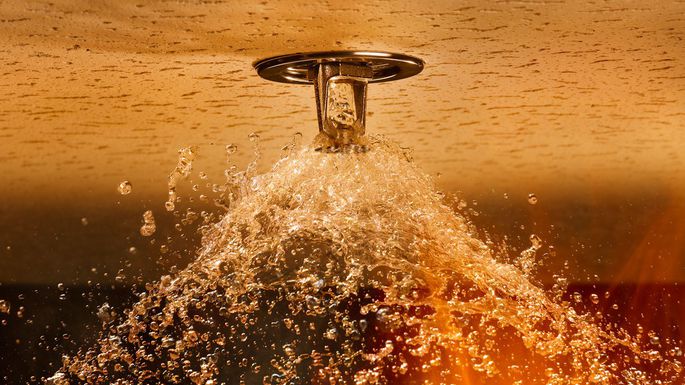How does a Fire sprinkler works.

A Fire Sprinkler System is a network of pipes running through the ceiling of building holding water stressed. Every mechanical device is nothing however a faucet (or "tap," as they call it in some countries)—a hole within the pipe through that water will escape into the building below. In an exceedingly normal faucet, you switch a screw to open up a valve that enables water to escape. In a sprinkler, the manual faucet is replaced by a heat-sensitive plug designed to open automatically once fire breaks out. In some sprinklers, the plug is formed of an alloy known as Wood's metal, a mix of bismuth, lead, tin, and cadmium that melts at a comparatively low temperature. In different sprinklers, the plug is a tiny glass bulb filled with a glycerin-based liquid designed to expand and shatter once it gets hot. The fundamental plan is the same in each case: the plug is supposed to break and open the sprinkler as quick as a fire breaks out. The description below shows the working of the glass-bulb version.
The Wood's metal version works in a slightly different manner. The array of sprinklers is fed by water pipes .Within the ceiling every sprinkler has 2 spring-like metal arms held together by a slug of the Wood's metal once the Wood's metal is unbroken, the spring arms are latched together and clamp the water pipe closed therefore no water can escape. Directly below every sprinkler, you'll notice there's a flower-shaped piece of metal known as a deflector.
If a fire breaks out below a sprinkler, hot gases swirl upward toward the ceiling. Once the temperature reaches around 70°C (160°F), the Wood's metal melts, allowing the 2 metal arms to spring open. Water can now escape the pipe even as it does from an open tap/faucet. It pours down from the pipe via ceiling, hits the flower-shaped deflector head directly below, and falls to the ground in a mild spray —hopefully extinguishing the fire. If the fireplace comparatively small, only the Fire Sprinkler System directly above it'll trigger and other near sprinklers will stay switched off to limit water damage. However, if the fire spreads, close sprinklers will soon be triggered likewise till either the fire goes out or the firefighters show up to assist out.
Types:
· Wet-Pipe Sprinkler
· Dry-Pipe Sprinkler
Wet-Pipe sprinkler:
In a wet-pipe sprinkler, the pipes on top of the ceiling are all full of cold water (blue). Once heat breaks out and the sprinkler opens, water will escape instantly, however the pipes may also freeze and burst in atmospheric condition if the building is cold.
Dry-Pipe sprinkler:
In a dry-pipe sprinkler, the ceiling pipes are full of compressed gas (yellow). Once a fire breaks out, the pressurised air rushes out of the Fire Sprinkler System, lowering the pressure within the pipe and opening the valve (red). This lets water (blue) flow on the same pipe to put out the heat. It takes longer for the water to reach the fire in this case.
Comments
Post a Comment